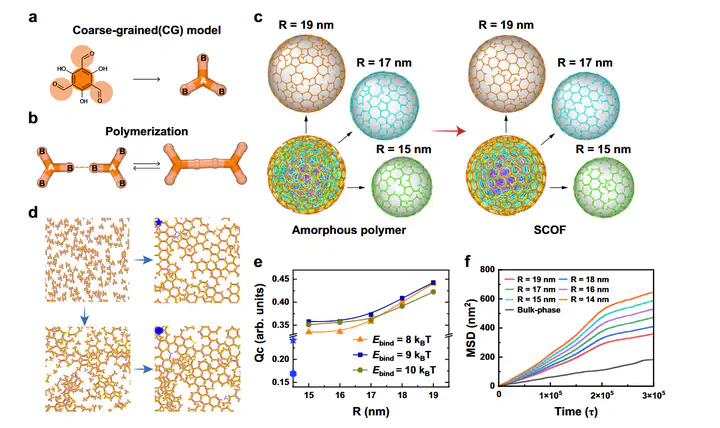Controlling crystallization in covalent organic frameworks to facilitate photocatalytic hydrogen production | Nature Communications

摘要
The catalytic performance, depending on the surface nature, is ubiquitous in photocatalysis. However, surface engineering for organic photocatalysts through structural modulation has long been neglected. Here, we propose a zone crystallization strategy for covalent organic frameworks (COFs) that enhances surface ordering through regulator-induced amorphous-tocrystalline transformation. Dynamic simulations show that attaching monofunctional regulators to the surface of spherical amorphous precursor improves surface dynamic reversibility, increasing crystallinity from the inside out. The resulting COF microspheres display surface-enhanced crystallinity and uniform spherical morphology. The visible photocatalytic hydrogen evolution rate reaches 126 mmol g–1 h–1 for the simplest β-ketoenamine-linked COF and 350 mmol gCOF–1 h–1 for SiO2@COF with minimal Pt cocatalysts. Mechanism studies indicate that surface crystalline domains build the surface electrical fields to accumulate photogenerated electrons and diminish electron transfer barriers between the COF and Pt interface. This work bridges the gap between microscopic molecules and macroscopic properties, allowing tailored design of crystalline organic photocatalysts.